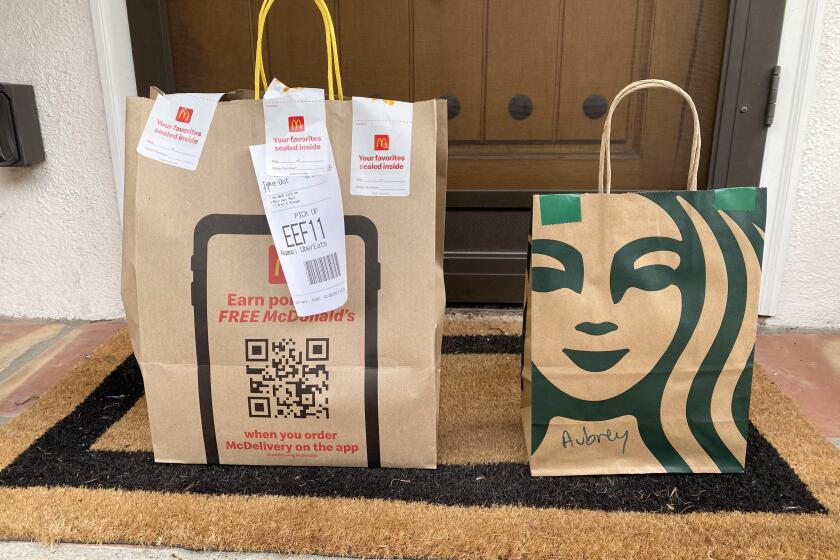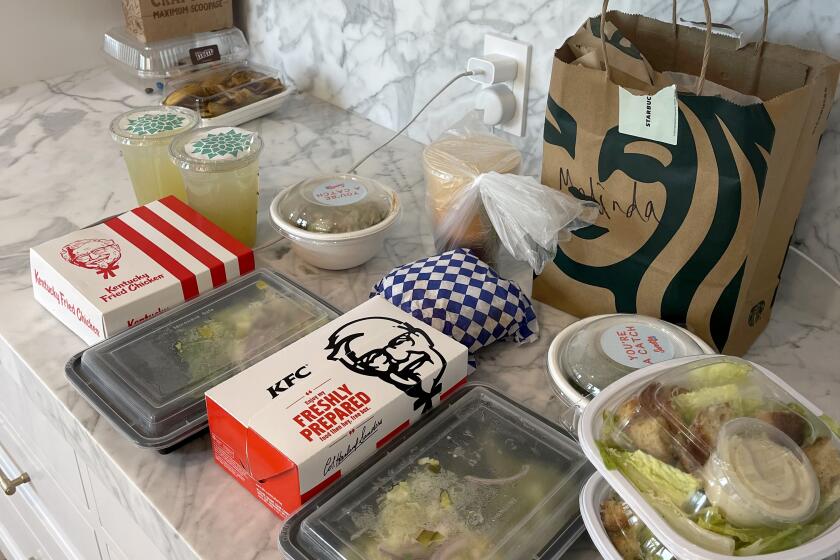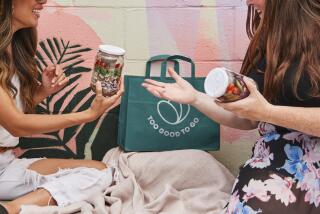The unwanted Uber Eats deliveries are back — and recipients are so over the free fries
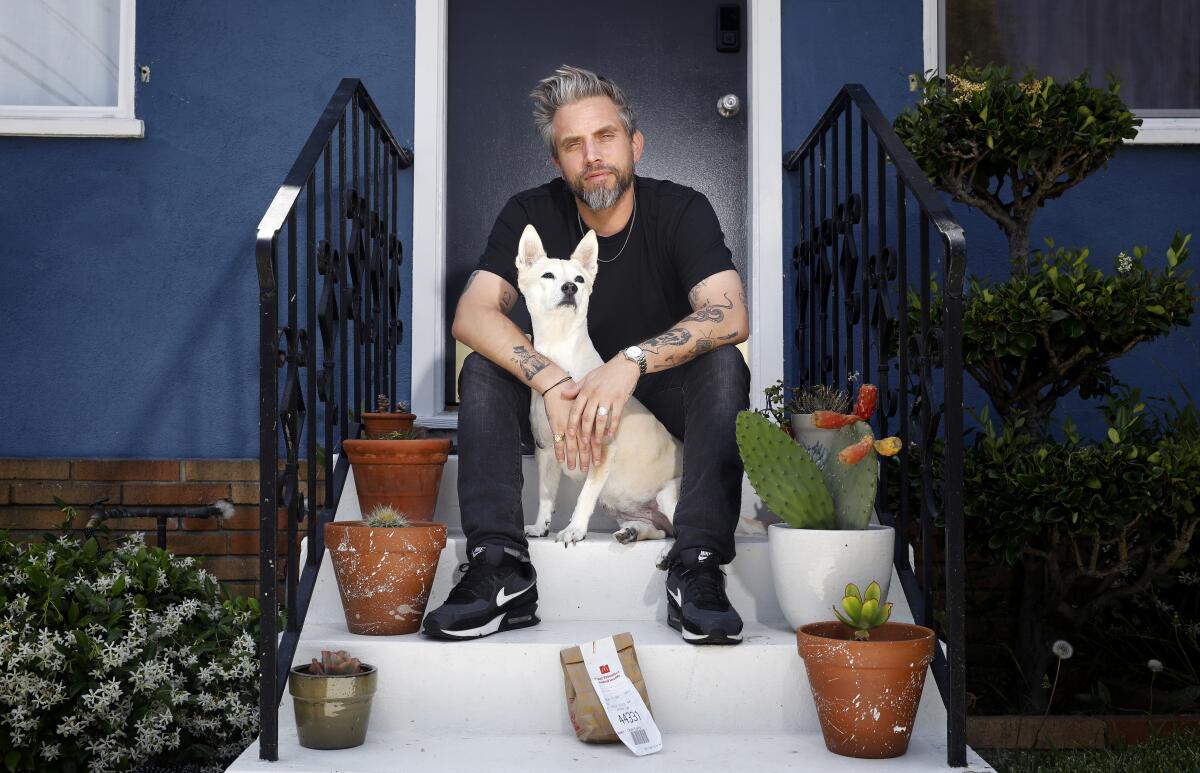
The phone calls had stopped. So had the emails. Weeks went by.
The story seemed over.
Then a message flashed on my computer screen.
“It’s starting again … ,” the May 11 email from Highland Park resident Alison Perrine said.
She didn’t have to say more.
It had been nearly two months since residents in the Northeast L.A. neighborhood last received unwanted food from Uber Eats.
Her follow-up confirmed the return of an L.A. mystery: “We’ve had 3 deliveries ... of a single order of McDonald’s fries.”

Subscribers get exclusive access to this story
We’re offering L.A. Times subscribers special access to our best journalism. Thank you for your support.
Explore more Subscriber Exclusive content.
Starting in late February, bewildered Highland Park residents had been inundated with unsolicited orders ferried by drivers from Uber Eats. Now, I realized I’d be returning to Range View Avenue, the street at the center of the whodunit.
The first time around, errant meals piled up at front gates and on doorsteps amid a deluge that lasted a few weeks. Several people received more than 10 deliveries; one person got about 30, another about 40. Some residents were bemused, others annoyed. The unsolicited deliveries were in the names of other people, and mostly came from McDonald’s and Starbucks. The food was paid for — and sometimes came with tips for the drivers, who, recipients said, mostly seemed undisturbed.
It was an odd (and rich) caloric tapestry. One order included four McDonald’s McGriddles (two sausage, two chicken). Another consisted of a lone Starbucks iced matcha tea latte with a mocha drizzle. That concoction was far more complex than the beverages that most people received: kid-size cartons of milk and bottles of water — sometimes only one per order. It was these deliveries — the simplest of drinks in the smallest of quantities — that seemed to really weird people out.
For more than two weeks, residents on a street in Highland Park have received unsolicited Uber Eats deliveries from McDonald’s and Starbucks, creating a confusing whodunit.
But residents said they hadn’t received any additional unsolicited food in the weeks after The Times on May 15 published a story on their experience. That is, until Perrine told me about the reemergence of the phenomenon.
Her note reignited the low-stakes mystery, which has highlighted the degree to which anonymity is woven into transactions carried out on the platforms of food delivery services, which have grown dramatically since the start of the COVID-19 pandemic. The free fast-food dispatches have led the denizens of Range View to develop a host of theories that would explain the bizarre situation. Others have weighed in too, including residents in Westwood Hills, where a similar episode unfolded in late January and early February.
People in that tony Westside community posited that the unwanted orders were the work of a burglary ring that was casing houses by sending them food to see if anyone was home. No crime has been linked to the deliveries.
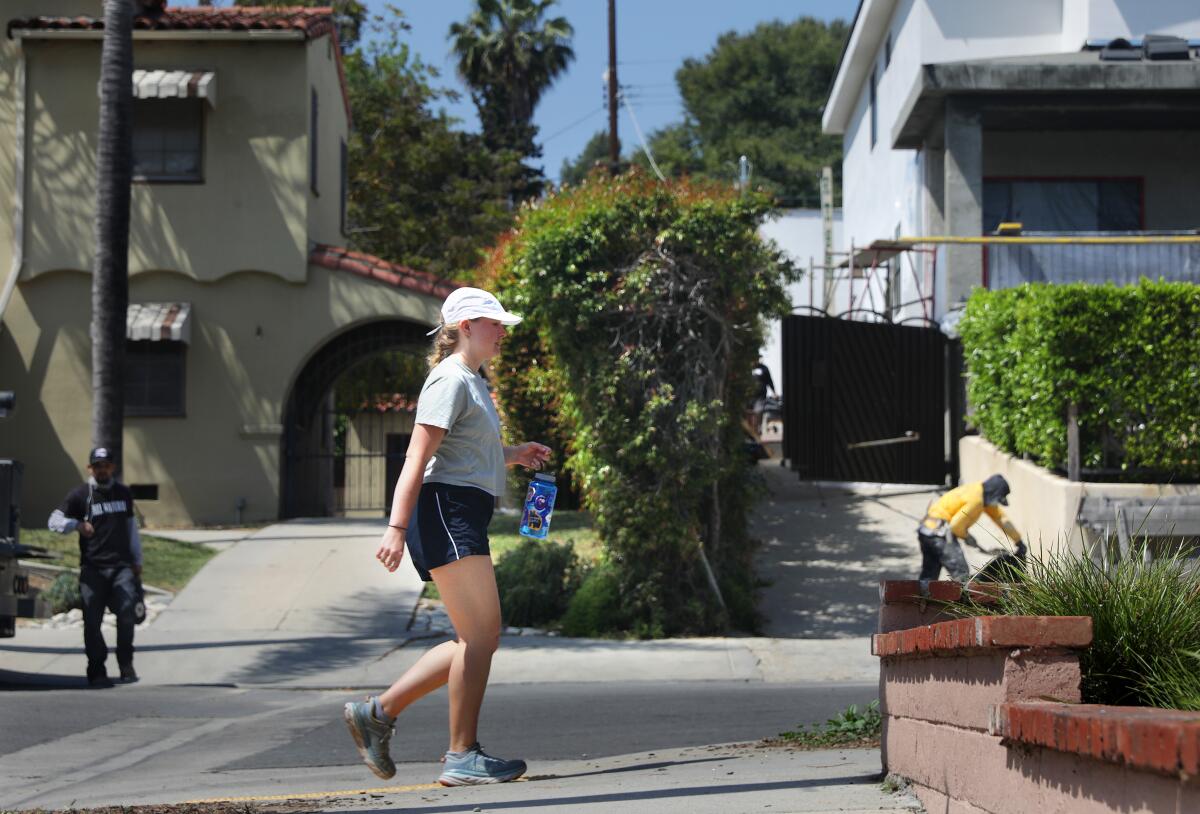
As various hypotheses were cast aside — including one that speculated the orders were part of an experiment conducted by a college psychology class and another that suggested they were the work of scammers phishing for drivers’ Uber Eats login credentials — a leading theory emerged. It centers on the deliveries being the ploy of criminals who are testing stolen credit cards by making small charges with them via Uber Eats.
I planned to ask residents about that during a visit to the neighborhood on May 31. But first I placed an Uber Eats order. I parked on Range View under a sky lidded with clouds and chose a coffee and a juice from Starbucks — the sort of small, inexpensive selection that’s typical of the undesired deliveries. My aim was to talk to the courier transporting the drinks. The Uber Eats app said her name was Wysper and I hoped for some answers — the sort that the company hadn’t yet provided.
A spokeswoman for Uber, the San Francisco-based parent of Uber Eats, previously told The Times that the company was investigating the matter and had banned some accounts from the platform while taking other unspecified steps to prevent misuse of the service. “The reports of unsolicited deliveries are concerning,” the Uber spokeswoman said in an April statement. “We ... will not hesitate to take additional action if the unsolicited orders continue.”
Asked to comment for this story, an Uber spokesman replied with that statement from April. He did not answer a handful of questions, including one inquiring about the source of the offending orders.
Perhaps Wysper would have some insight?
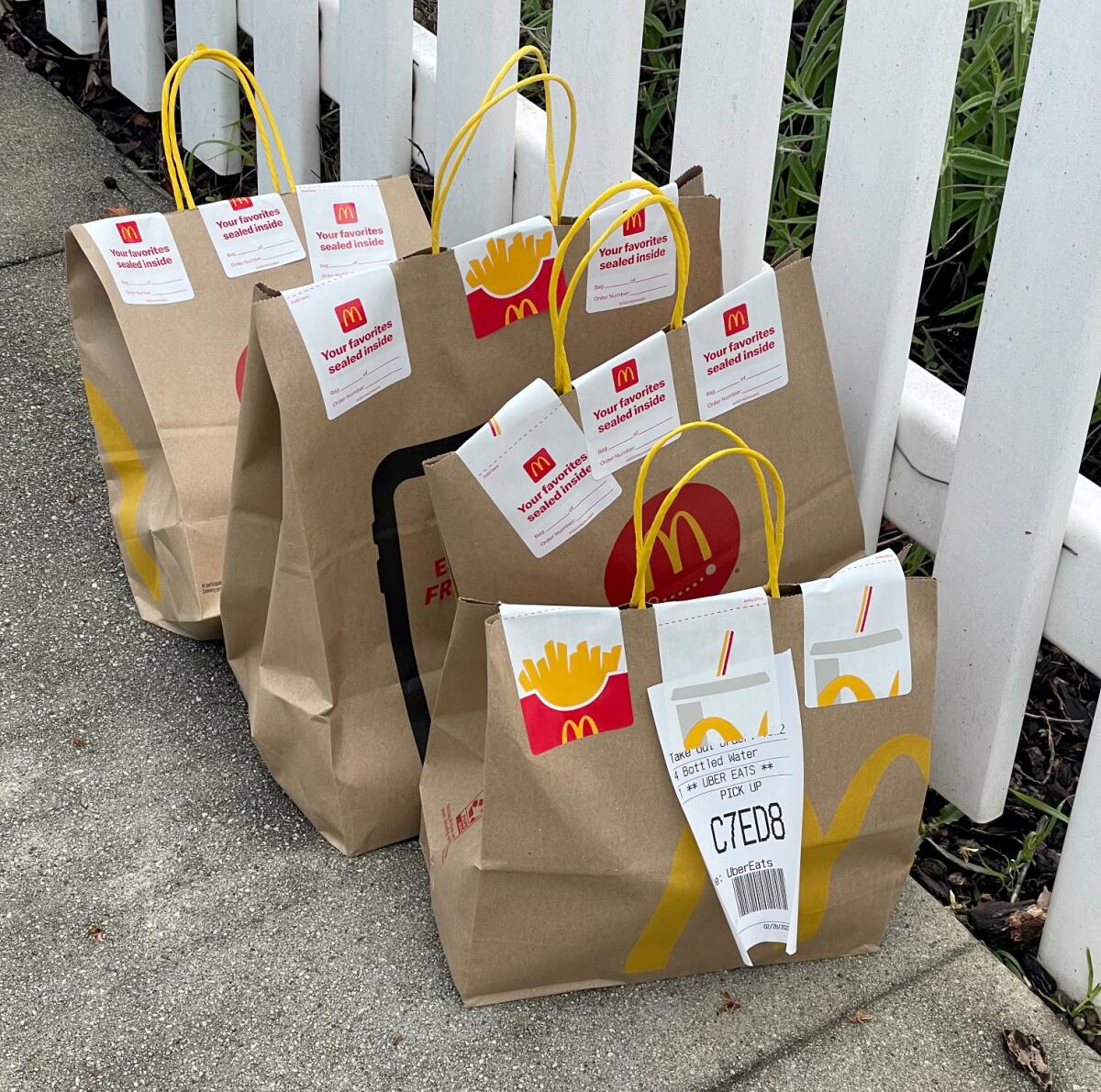
A few minutes later, a red Nissan Versa pulled up to the curb and a smiling woman stepped out of the car with a Starbucks bag. She explained her name was Wysper Samone. I launched into a spiel about the situation.
“Oh, wow,” said Samone, offering what figures to be the only appropriate response when a Starbucks run unexpectedly turns into an interview.
Samone said she hadn’t made other deliveries on Range View and wasn’t aware of the strange orders in Highland Park. But she did say that something similar had happened near Pico Rivera. She seemed busy, so I wished her well.
I reached Samone the next day by telephone and asked if she had a theory that would explain the phenomenon. But she demurred.
“I just pick up and deliver,” Samone said. “That’s all.”
‘Low-tier’ criminals?
There was one house I knew I had to visit.
Back in March, there’d been a sign on its front door that exhorted Uber Eats couriers to “NOT LEAVE ANY ORDERS!”
Richie Kulchar opened his door, saw my Starbucks bag and started to laugh. He thought I was a neighbor inquiring about the new deliveries. That would have made sense: Three residents on Range View told The Times that they had received multiple orders in recent days; two other people who lived nearby, Perrine included, said they had gotten several deliveries in mid-May.
“Every day it’s one milk in a bag,” said Kulchar, a commercial producer and director who lives on Avenue 50 near Range View. “I’m a pro at this now, I’m checking my credit cards, my Uber Eats account — none of it is showing up on there.”
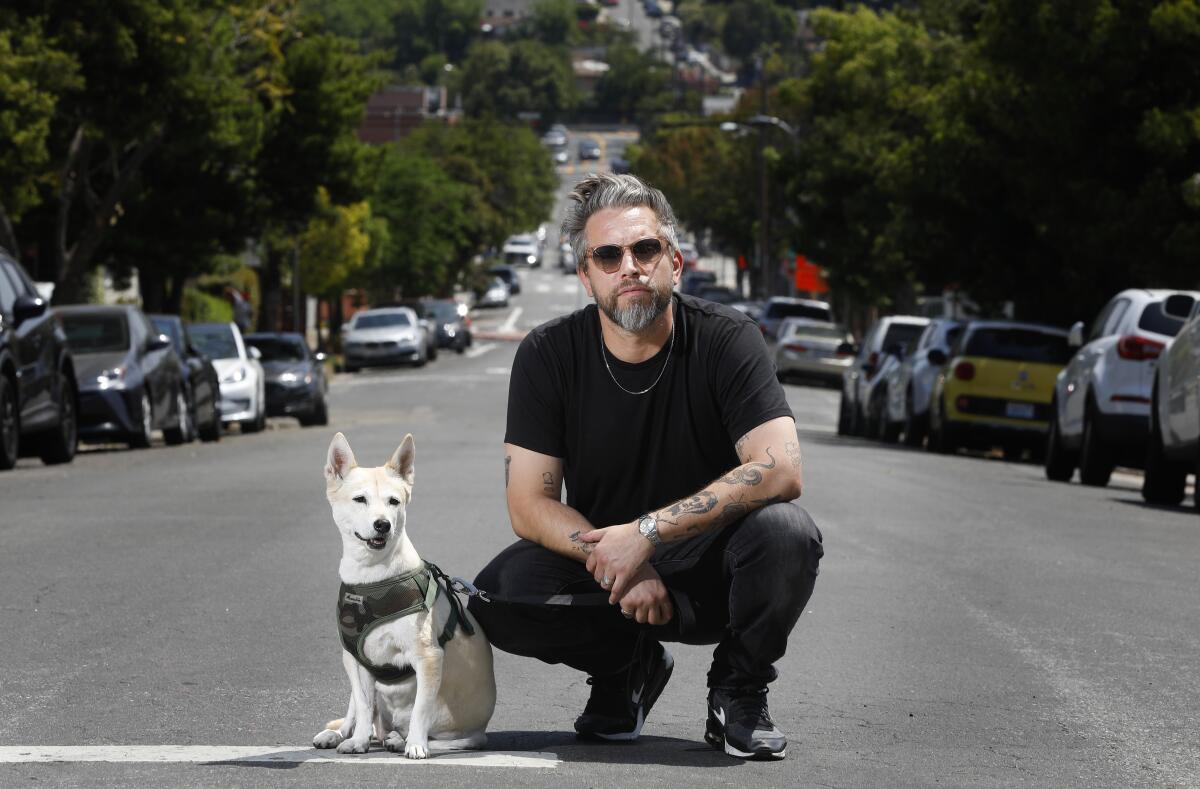
At first, Kulchar said, he was amused by the situation. But after enduring five deliveries from May 26 to May 30, he’s not laughing. The orders are often brought by couriers who pound on his front door, upsetting his dog, Molly.
“Now, I’m just annoyed with Uber Eats,” Kulchar said. “I throw it away, which is a bummer because I really don’t like wasting an unopened milk. But what am I going to do, stock it in my fridge?”
Kulchar believes the deliveries are the byproduct of “low-tier” criminals attempting to validate stolen credit card numbers. Range View resident Kelsey McManus agrees.
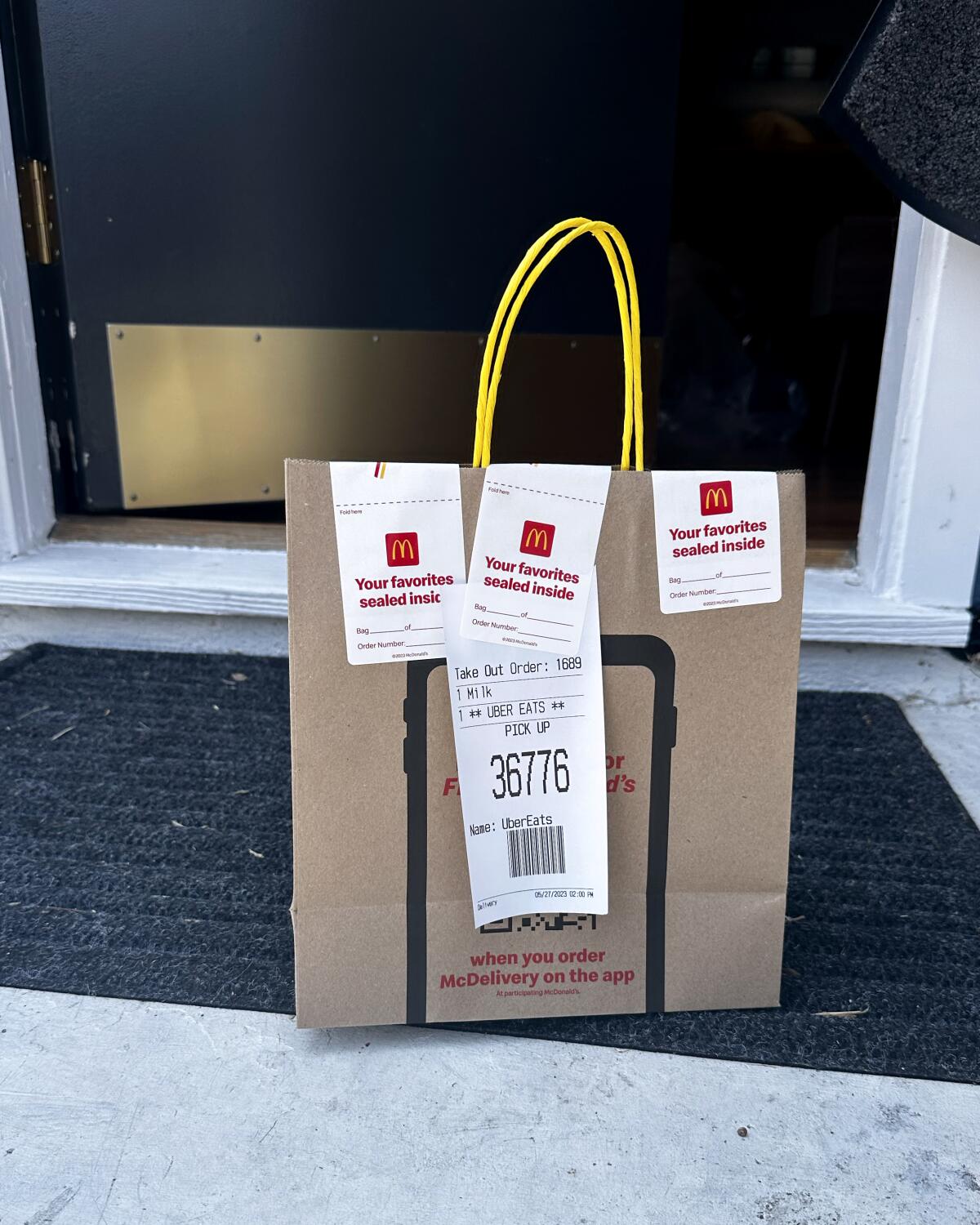
She speculated that the effort could be AI-driven, noting that when some Uber Eats drivers have attempted to telephone the people who’ve placed the orders, the calls go to “nonexistent numbers.”
We joked about using ChatGPT to solve the mystery. But when I queried the AI, it said that it couldn’t “investigate specific incidents.”
Asked if the unsolicited orders were part of an effort by criminals to test stolen credit card numbers, a spokesman for Uber said that it was a possibility the company was investigating.
Computer security and e-commerce expert Clifford Neuman wondered if the offending orders were placed by new Uber Eats accounts that were used just once, or whether they came from long-standing ones that made the purchases routinely. He also raised the issue of credit card charge-backs.
“You would think now ... months after this started, you would have gotten the charge-backs — which Uber would know about — when people saw it on their credit card statements,” said Neuman, director of the USC Center for Computer Systems Security.
The Times asked Uber whether the unwanted orders have resulted in charge-backs and for information about the accounts making the purchases. A spokesman said Uber could not share details of bad actors’ methods and the company’s response to them, because doing so would reveal internal processes to the offending parties.
A ‘boring-ass’ prank?
A gnawing desire to “to know the answer” has stuck with McManus.
“When you first tell people, they all go, ‘Oh, it’s a prank,’” she said. “But it seems so much more systemic than that.”
In an era of popular television shows built around elaborate reality-distorting ruses — among them Amazon Freevee’s “Jury Duty” and HBO’s “The Rehearsal” — the notion that the unwanted deliveries are part of a made-for-TV stunt has come up. But there’s no evidence this is the case.
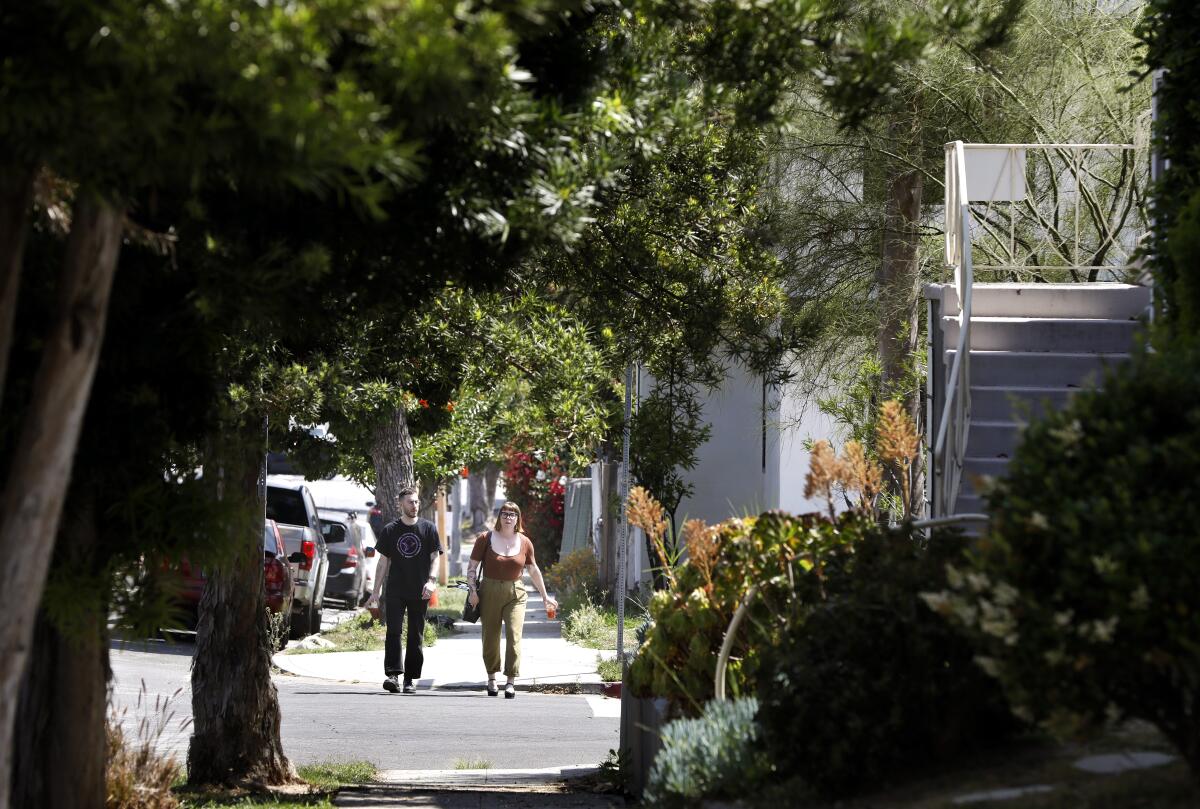
Some residents think maybe this is a prank of the more old-fashioned sort: one masterminded by college students.
Occidental College is just down the road from the affected portion of Range View, an eclectic stretch of about 25 houses and apartment buildings between Avenue 49 and Avenue 50. There is even a fraternity house on the block.
Wanting to ask the frat brothers if they had the inside scoop, I trudged up the front stairs of the house, snaking past a yard teeming with overgrown weeds and discarded cans of Modelo Especial and Michelob Ultra. But no one was home — the semester had ended. Another dead end.
Kulchar, in any case, doubted the theory.
“That’s the most boring-ass prank that a college student could pull,” he said.
A spate of unwanted food deliveries in Westwood Hills and Highland Park has vexed residents. With few answers to questions about the source of the orders, one intriguing theory has emerged.
Walking past discarded ketchup packets that lined the stairs of the frat house, I was reminding of something mentioned by L.A.-based horror writer Lisa Morton, who called the whole episode a “cosmic comedy.”
“Nothing really harmful is happening to these people, but it is beyond annoying and somewhat disturbing,” said Morton, who contributed an unnerving short story to the 2021 anthology “Speculative Los Angeles,” which offers largely bleak and futuristic visions of the city. “Maybe they have moved past it and accepted that it is going to be uncomfortable. Maybe that’s how it is with these dystopian things we confront.”
There was certainly something dystopian about the food waste generated by the ordeal. Some residents said they’ve eaten the free fare or donated it, but several others, Kulchar included, have been throwing it away. Morton gets it.
Food cloaked in mystery — mystery food, if you will — doesn’t necessarily go down so easily.
“If I were getting this food, I’d be freaked out,” she said. “I wouldn’t eat it.”
More to Read
Sign up for This Evening's Big Stories
Catch up on the day with the 7 biggest L.A. Times stories in your inbox every weekday evening.
You may occasionally receive promotional content from the Los Angeles Times.

